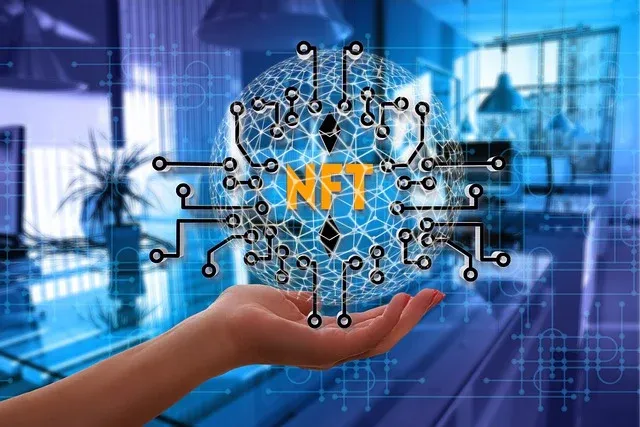In recent years, the world of art has undergone a transformative shift, propelled by advancements in technology and the rise of cryptocurrencies. One of the most groundbreaking developments to emerge from this intersection is Non-Fungible Tokens (NFTs), which have revolutionized the way we perceive, create, and consume art. NFTs have opened up new avenues for artists, collectors, and enthusiasts, challenging traditional notions of ownership and authenticity. In this article, we delve into the fascinating landscape of NFT art, exploring its origins, impact, and the implications it holds for the future of the art world.
Understanding NFTs and Their Role in Art:
Non-Fungible Tokens (NFTs) are unique digital assets that are stored on a blockchain, a decentralized and immutable ledger system. Unlike cryptocurrencies such as Bitcoin or Ethereum, which are fungible and can be exchanged on a one-to-one basis, NFTs are indivisible and cannot be replicated. Each NFT contains metadata that certifies its authenticity, ownership, and provenance, making it a powerful tool for establishing digital scarcity and ownership rights.
NFTs have gained widespread attention primarily within the realm of digital art, where they serve as a means of monetizing and authenticating digital creations. Artists can tokenize their work as NFTs, allowing collectors to purchase and own the original digital file along with the associated ownership rights. This enables artists to monetize their digital creations directly, bypassing traditional intermediaries such as galleries or auction houses.
The Rise of NFT Art: Origins and Evolution:
While the concept of digital art is not new, the integration of NFTs has sparked a renaissance in the medium, attracting artists from diverse backgrounds and disciplines. The origins of NFT art can be traced back to 2014 with the creation of the Ethereum blockchain, which introduced smart contracts capable of supporting NFT standards such as ERC-721 and ERC-1155. However, it wasn't until the mid-2010s that NFT art began to gain significant traction, propelled by the growing popularity of blockchain technology and the burgeoning interest in digital collectibles.
One of the earliest and most notable examples of NFT art is "CryptoPunks," a collection of 10,000 unique pixel art characters generated algorithmically on the Ethereum blockchain. Released in 2017 by Larva Labs, CryptoPunks laid the groundwork for the subsequent explosion of NFT-based art projects. Following in its footsteps, other platforms such as SuperRare, KnownOrigin, and Rarible emerged, providing artists with the infrastructure to mint, sell, and trade NFTs.
The meteoric rise of NFT art reached its pinnacle in early 2021, fueled by high-profile sales and celebrity endorsements. Notable examples include Beeple's. "Everydays: The First 5000 Days," a digital collage sold for $69 million at Christie's auction house, and Jack Dorsey's tweet auctioned as an NFT for $2.9 million. These landmark transactions catapulted NFT art into the mainstream consciousness, attracting both fervent supporters and vocal critics.
Challenges and Controversies Surrounding NFT Art:
Despite its rapid ascent, NFT art has faced a barrage of criticism and skepticism, particularly regarding its environmental impact and potential for market manipulation. The process of minting and trading NFTs consumes a considerable amount of energy, primarily due to the energy-intensive consensus mechanism known as Proof of Work (PoW) used by many blockchain networks. Critics argue that the carbon footprint associated with NFTs undermines their purported benefits and sustainability.
Moreover, the NFT market has been plagued by concerns related to copyright infringement, plagiarism, and the lack of regulation. The decentralized nature of blockchain technology makes it challenging to enforce intellectual property rights and prevent unauthorized reproductions of digital artwork. This has led to instances of artists having their work stolen or plagiarized, raising questions about the efficacy of existing mechanisms for protecting creative content in the digital age.
Furthermore, the speculative nature of the NFT market has raised eyebrows among traditional art connoisseurs and economists alike. Critics warn of a potential bubble fueled by speculative frenzy, reminiscent of previous market booms such as the Dutch tulip mania or the dot-com bubble. The volatility and unpredictability of NFT prices have led some to question the long-term viability of investing in digital assets with no tangible intrinsic value.
Potential and Future Outlook of NFT Art:
Despite the challenges and controversies surrounding NFT art, many proponents believe that it represents a paradigm shift in the art world with far-reaching implications. NFTs
Moreover, NFTs have the capacity to redefine the concept of ownership in the digital realm, introducing new models of patronage and collaboration. Through fractional ownership and decentralized autonomous organizations (DAOs), collectors can collectively invest in and govern digital art projects, fostering a sense of community and shared ownership. This collaborative ethos aligns with the ethos of Web3, a decentralized and user-centric vision of the internet that prioritizes transparency, interoperability, and self-sovereignty.
Looking ahead, the future of NFT art hinges on the ability of stakeholders to address the underlying challenges and harness the transformative potential of blockchain technology responsibly. Initiatives aimed at mitigating the environmental impact of NFTs, such as the transition to more energy-efficient consensus mechanisms like Proof of Stake (PoS), are already underway. Likewise, efforts to establish standards for intellectual property rights and digital provenance seek to enhance the integrity and trustworthiness of NFT-based transactions.
In conclusion, NFT art represents a groundbreaking convergence of art, technology, and finance, reshaping the landscape of creativity and ownership in the digital age. While still in its nascent stages, NFT art has already demonstrated its capacity to empower artists, engage collectors, and challenge conventional paradigms. By fostering innovation, inclusivity, and decentralization, NFTs have the potential to democratize access to art, redefine notions of value, and shape the future of cultural expression. As we navigate this uncharted territory, it is imperative to strike a balance between innovation and responsibility, ensuring that NFT art fulfills its promise as a force for positive change in the art world and beyond.

















No comments:
Post a Comment